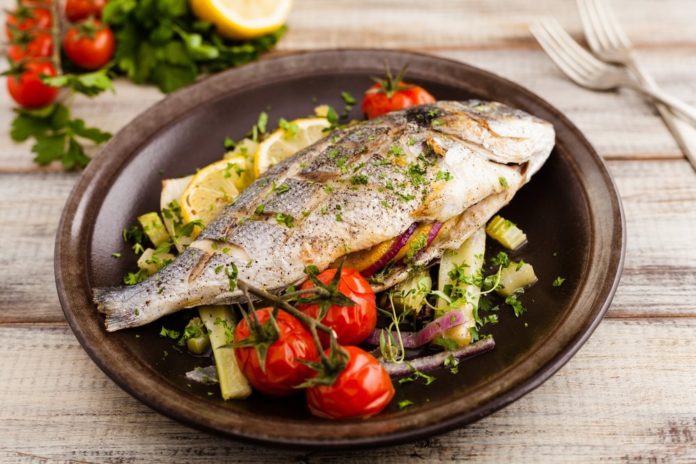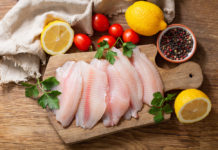- Fish is a versatile protein that is easy to prepare and quick to make—but understanding how long to cook it is key
- Overcooking fish can make it dry
- Simple treatments and cooking methods often work best for seafood
- Shrimp, fish fillets and whole fish are all easy to cook once you understand the basics
One of the most common questions we get at The Healthy Fish is “how long should fish cook for?” While there is no one-size-fits-all answer, it’s pretty easy to figure out with a bit of advance planning and know-how. Follow our guide below for foolproof instructions to cook your fish right, whether you’re grilling, baking or pan frying.
Whole Fish

A whole fish on a platter makes for an impressive dinner. And once your fish is scaled and gutted (or if you buy Regal Springs Tilapia, it comes prepared this way) and has its gills removed, it doesn’t take much effort to create an exciting main course.
Grilled
- First, use a knife to score the fish with a few diagonal lines on each side, cutting every three inches or so. This will help it cook evenly all the way through.
- Coat the fish in oil, season it with salt and lay it on the grill with the tail facing away from the heat. Keep on steady medium heat for about 10 minutes per inch of thickness.
- Only flip fish once, about halfway through. Otherwise, you’re likely to break it.
Baked
- For a Tilapia-sized fish, about 1.5–2.5 pounds, bake the fish in the oven for about 25–30 minutes at 400 degrees.
- Bake a 4-pound fish for 35–45 minutes, and a 6-pound fish for 50–60 minutes at 400 degrees.
- If you want to add flavor to your fish, try one of our favorite baked Tilapia recipes.
Fillets of Fish

A fish fillet makes a simple, easy-to-eat dinner. For best results, don’t marinate the fish first. This can break down the protein and cause the fillet to fall apart.
Pan-Fried with Skin
- Rinse with water and dry both sides.
- Heat a pan over high heat, and add an even coating of oil.
- Place the fish skin-side down and use a spatula to press the flesh into the pan.
- After about 3–5 minutes on one side, the fish will start to become opaque and the edges will start to brown. This suggests it may be cooked through, so see if you can flip it over using a spatula.
- If the fish is sticking to the pan, it’s likely not ready yet. Once it’s ready to be turned, it will slide off the pan with ease. Remember this is your only flip—the fish will start to fall apart if you try flipping again.
- Ideally, the fish should be cooked almost completely on the skin side, then flipped just once to get a touch of color on the other side.
- Once the fish begins to flake when touched with a fork, it’s ready. Remove from heat and garnish with butter and lemon, or a sauce.
Pan-Fried without Skin
- If your fish doesn’t have skin, you can follow almost the same instructions as above, but instead, cook the fish for the same amount of time on each side.
- Let it get a little browned on both sides, but be careful not to dry it out from overcooking; about 2–3 minutes per side should do.
Shrimp and Scallops

Shrimp and scallops are a great food to have in the freezer for a quick ready-to-make meal. For best results, remove them frozen from the freezer and thaw under cold water. Don’t use hot water as you may inadvertently start cooking them. Once thawed, you can cook them your favorite way—we like to broil or sauté them.
Broiled
- Baste your shrimp or scallops in butter or olive oil, then cook under the oven broiler for 4–5 minutes, flipping them at the two-minute mark.
Sautéed
- Preheat your skillet to a medium heat, then sauté the shrimp or scallops in butter for about 2–2.5 minutes per side, or until they are completely opaque.
No matter what kind of seafood you cook with, it’s essential to start with the freshest ingredients you can find. Learn about the most common cuts of fish, and what questions to ask your fishmonger to make sure you’re always buying the best quality seafood.
Photo credits: gkrphoto / Shutterstock Inc., nadianb / Shutterstock Inc., Tookapic / Pexels, Foodio / Shutterstock Inc.






